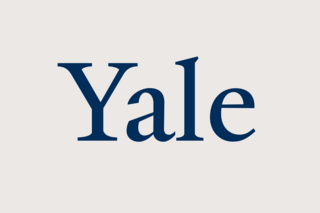Yale Logo
As the chief symbol of Yale’s identity, the Yale logo must be used consistently, properly, and effectively.

Wordmarks
These extensions of the Yale logo help your audience identify the source of the communications in front of them.

Creating Custom Logos
In rare cases only, special events, programs, or campaigns may benefit from unique logos developed under the guidance of the Office of the University Printer, who will ensure the logo aligns with Yale’s identity.
